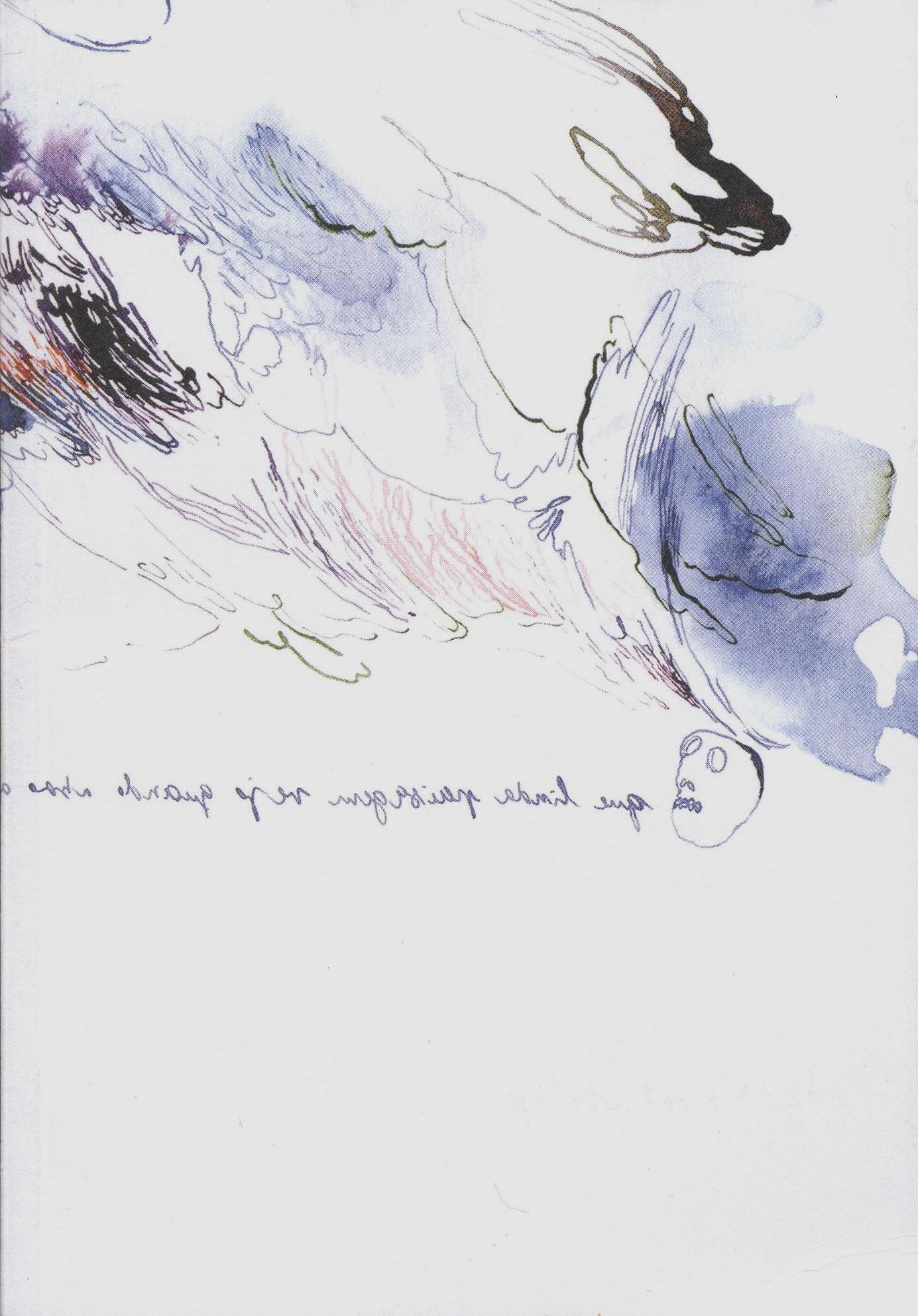Isabel Barona, [O livro azul]
[S.l. : Ed. do Autor], 2009.
[56] p. : il. color. ;
17 x 12 x 0,5 cm.
Impressão em offset
tiragem: 250 exemplares em papel printset.
The cover of Blue Book repeats a matrix drawing, which represents the primal scene and contains the key to the meaning of the story. In this case the front and back covers are already the story – they’re simultaneously the prelude and the epilogue (apparently the story is always resetting itself).
This matrix drawing is reprinted three times in a given stage, later re-worked and amended (the background colour and number of characters), and reprinted again. Repetition of this specific image is intended to emphasize a narrative constructed as a closed circle, as if the support was a palimpsest that reproduced, after some time of use, the first image drawn on it. Unlike the Book of Sand by Jorge Luis Borges, we always come back to these pages.
In the first matrix drawing (cover) and following pages we read a kind of dialogue: “what a beautiful landscape I see when you open my mouth” overlapped with “it’s another one that opens the mouth and dies “. On pages 8-9 we read “subir l’amour par un trou (undergo love through a hole)” – a phrase of undeniable violence, especially due to its highly sexual ambivalence. In fact, for the impassioned lover, love is pure pathos and he suffers (or endures) love through and in all the orifices of the body: the eyes that want the physical presence of the other, the mouth that utters the words of seduction and enjoys the skin it loves, the ears that pick up everything that moves or hurts, nostrils and all the pores of the body. The body of the one who loves is, all of it, an empty hole ready to be filled by the presence of the beloved.
Despite several text fragments more or less complete and legible, it is impossible to formulate a systematic relationship between the various phrases or draw a consistent conclusion about their meaning, particularly with regard to the assertiveness of “there are neither more nor less, you are not”. In this volume, as in the previous ones, on the one hand there is a strong presence of a drawn text, but on the other hand its content is limited to a minimum and its meaning is ambivalent.
The organization of the pages provides the pretext to show a questioning about the end and the beginning of the book and its narrative coherence. This challenge is explicit in the insertion of the words “the end” on pages 4-5 and the five apparently empty pages that punctuate the book. This image of a screen on a black background that reads “the end” makes the beginning of the book to be seen as its end and allows it to be browsed from back to front.(Texto fornecido pela artista ao site Tipo.PT, disponível em: <http://www.tipo.pt/index.php/en/archives/details/8/3>, acesso em 21 out 2015)
Site da artista: http://www.isabelbaraona.com/

